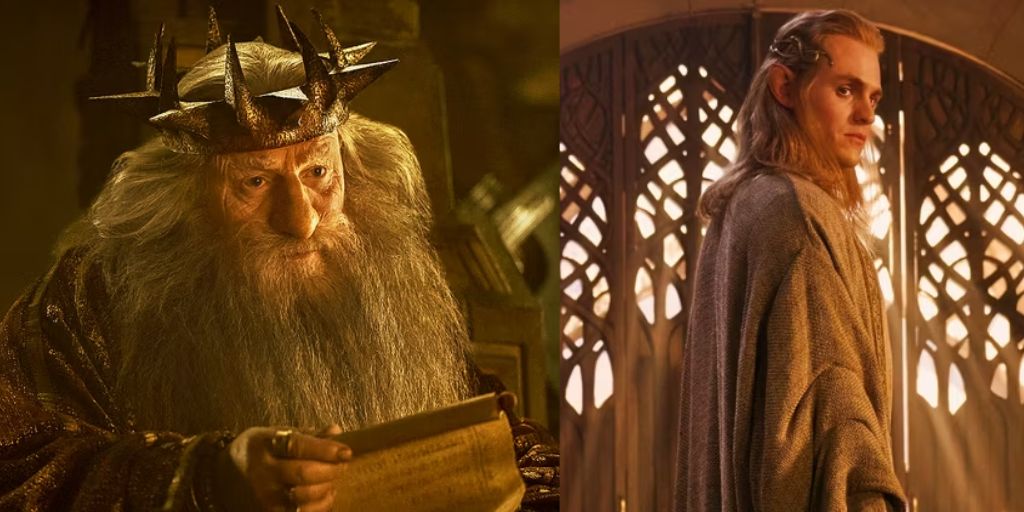The world of The Lord of the Rings has returned in The Rings of Power, taking fans back to the magical land of Middle-earth. However, things are quite different in this new era. The series is set during the Second Age, a time long before the events of J.R.R. Tolkien’s The Lord of the Rings.
Although familiar places and characters still exist, the world is evolving into what will eventually become the Middle-earth seen in Tolkien’s more well-known works. A significant part of this evolution centers around the discovery of mithril, an incredibly powerful metal that will play a key role in shaping the future of Middle-earth.
One of the most important discoveries in the series so far takes place in the great Dwarven kingdom of Khazad-dûm, where Prince Durin IV (played by Owain Arthur) is hiding a big secret.
In The Rings of Power Season 1, Episode 4, titled “The Great Wave,” Durin reveals this secret to his friend Elrond (Robert Aramayo).
Durin has been secretly mining mithril, a metal with a rich and powerful history in Middle-earth, and it will have a huge impact on the present and future of the world. The series has already shown that mithril is an incredibly powerful material, but its true potential is only just beginning to be understood.
Mithril Mining Is Dangerous and Full of Consequences
In Episode 4 of Season 1, Elrond uncovers the secret that Durin has been keeping. Elrond, suspecting that Durin is sneaking off to an old mining tunnel, decides to follow him to find out what is going on. When Elrond confronts him, Durin has no choice but to explain that he and his people have been mining for a very unique substance: mithril.
However, the process of mining mithril is extremely dangerous, and King Durin III (Peter Mullan), Prince Durin’s father, has placed restrictions on how much mining can be done. Prince Durin explains that mithril is called “gray glitter” in his people’s language.
The Elvish language, Sindarin, has no name for it, but Durin gives it an approximation: “mith-raud.” Elrond corrects him by combining the words for “gray” (mith) and “glitter” (ril), coining the name “mithril,” which is more familiar to Tolkien fans.
Though mithril is incredibly valuable, the process of extracting it from the ground is highly dangerous. At this stage in the series, the Dwarves are keeping the existence of mithril a secret because they know that once the world learns of it, the demand will be overwhelming.
Despite the secrecy, Durin gives a shard of mithril to Elrond as a token of their friendship. As the two of them are discussing the substance, disaster strikes when the mithril mine collapses, trapping four Dwarves inside.
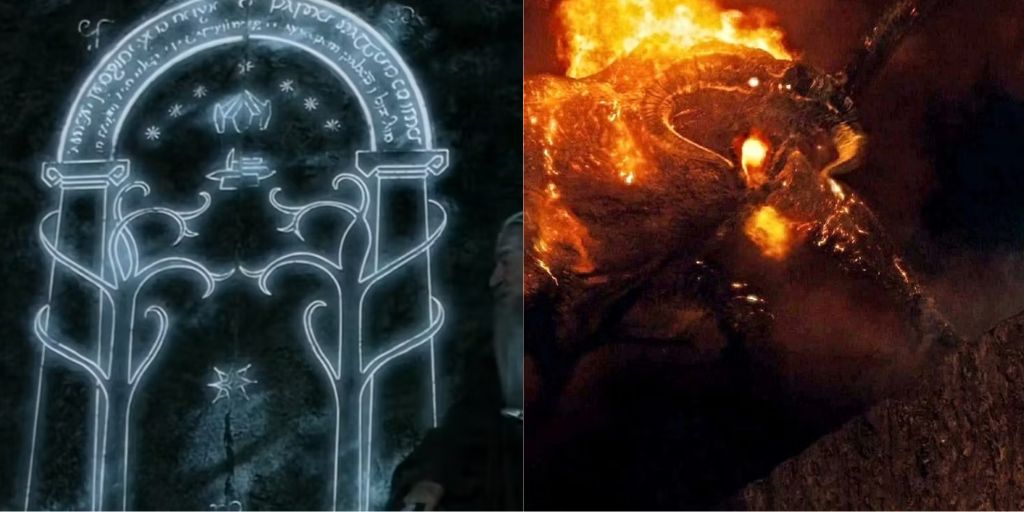
Fortunately, all four Dwarves are rescued without any fatalities, but the event prompts King Durin to shut down the mining operation. This decision greatly angers Prince Durin, but given what is known about the lore of The Lord of the Rings and mithril’s significance in the The Rings of Power, it is likely that Durin won’t let the issue rest for long.
The Origins of Mithril Are Altered in The Rings of Power
In Season 1, Episode 5, titled “Partings,” the origins of mithril are explained, though they differ somewhat from the original Tolkien lore. The High King of the Elves, Gil-galad (played by Benjamin Walker), tells Elrond about an ancient Elvish legend called “The Song of the Roots of Hithaeglir.”
According to this story, there was once a great battle in the Misty Mountains between an Elven warrior and a Balrog, a fearsome demon. The two warriors fought over a tree that was believed to hold the last of the lost Silmarils, powerful gems that contained the light of the Two Trees of Valinor, which once illuminated Middle-earth.
The Elven warrior poured all his light into the tree in an attempt to protect it, while the Balrog channeled his evil power into the tree to destroy it. During their battle, a lightning bolt struck the tree, creating a powerful new force. Gil-galad describes this force as “pure and light as good” and “strong and unyielding as evil.”
This power is said to have seeped into the tree’s roots and eventually made its way deep into the mountains, where Gil-galad believes it transformed into the mithril that the Dwarves discovered.
If this legend is true, mithril is far more than just a valuable metal. It contains the light of the last Silmaril, which gives it incredible magical properties. This version of mithril’s origin is a departure from Tolkien’s original writing.
In Tolkien’s lore, mithril was a naturally occurring metal that, while valuable and rare, did not have magical origins. The Rings of Power changes this by tying mithril’s creation to the Silmarils, giving the metal much greater significance.
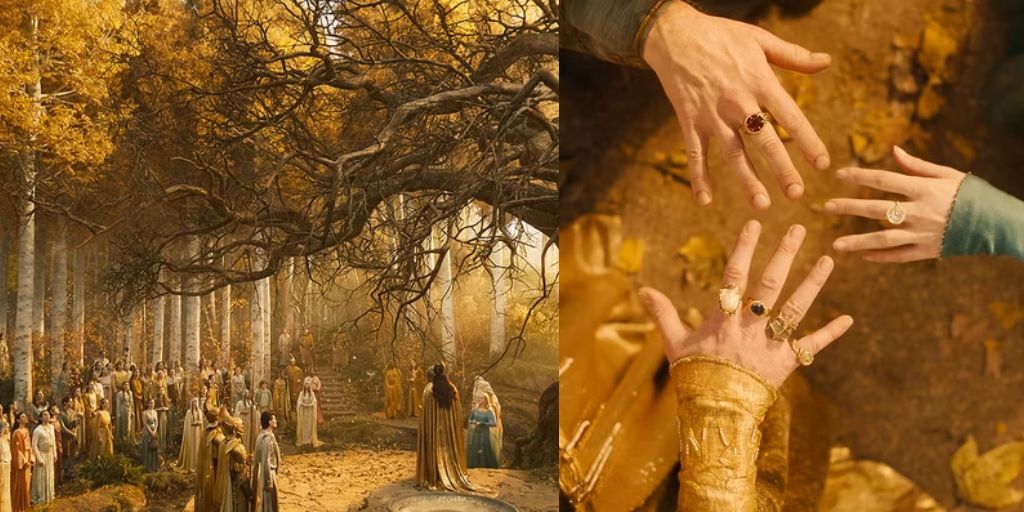
This alteration adds weight to mithril’s role in the story, making it not just a valuable resource but a substance with the power to influence the fate of Middle-earth.
While mithril was important in Tolkien’s world, it was primarily seen as a symbol of wealth and power. However, in The Rings of Power, mithril is essential for the survival of the Elves, and Prince Durin may eventually defy his father to continue mining it.
Mithril Becomes Critical to the Elves’ Survival
The connection between mithril and the Elves is further shown in Episode 5, when Gil-galad reveals to Elrond why mithril is so crucial. The Light of the Eldar, which sustains the Elves’ immortality, is fading. Without a way to preserve it, the Elves will either have to leave Middle-earth or slowly wither away.
The growing rot on a tree that represents the Elves’ fading light is clear evidence of their impending doom. Desperate for a solution, Gil-galad believes that mithril is the key to stopping the decay and preserving the Elves’ immortality.
This revelation puts Elrond in a difficult position. He made an oath to Prince Durin not to reveal the existence of mithril to anyone, but now the fate of his people depends on acquiring a large quantity of the precious metal.
Elrond struggles with this dilemma, knowing that if he breaks his promise to Durin, he risks damaging their friendship. Despite this, he eventually confides in Durin about the Elves’ predicament, and Durin agrees to speak with his father about helping the Elves.
However, King Durin III refuses to assist the Elves, seeing no reason to risk the lives of his people for their benefit. Undeterred, Celebrimbor (Charles Edwards), a master Elven smith, takes matters into his own hands.
With some guidance from Sauron (disguised as Annatar), Celebrimbor uses the shard of mithril that Durin gave Elrond to forge three magical rings: the Elven Rings of Power.

Though Sauron’s influence may taint these rings, they successfully stop the rot and preserve the Elves’ light, allowing them to remain in Middle-earth. Mithril’s ability to save the Elves hints at its greater potential, and it’s clear that its role in the series is far from over.
Mithril’s Influence Will Spread Across Middle-earth
Even without its magical properties, mithril is a valuable and sought-after resource in Middle-earth. It is incredibly strong yet lightweight, making it ideal for crafting armor and weapons. Mithril does not tarnish and is worth ten times its weight in gold, making it a symbol of wealth and power.
Mithril is in high demand throughout Middle-earth, but it is extremely rare, found only in a few places such as Khazad-dûm (also known as Moria) and Númenor. The discovery of mithril in The Rings of Power hints that its influence will spread far beyond Khazad-dûm.
The Dwarves of Khazad-dûm keep mithril a closely guarded secret, knowing that it will bring them immense wealth. However, mithril’s rarity also makes it dangerous. The more valuable it becomes, the more people will seek it out, leading to conflict.
Mithril has the power to shape the future of Middle-earth, not just for the Dwarves and Elves but for all its inhabitants. The series hints that mithril’s magical properties may play a role in the creation of other powerful artifacts, such as the Dwarven Rings of Power and the Rings of Men. These rings, crafted with the help of Sauron, will have far-reaching consequences for the future of Middle-earth.
The Dark Side of Mithril: The Fall of Moria
Mithril’s value comes at a steep price. In the Third Age, long after the events of The Rings of Power, the Dwarves of Moria (formerly Khazad-dûm) grow greedy and continue mining for mithril even after most of it has been exhausted.
In their desperation to find more, they dig too deep and awaken a powerful demon known as a Balrog. This Balrog, also called Durin’s Bane, kills the Dwarven king and forces the remaining Dwarves to flee their home. Moria becomes a dark and dangerous place, overrun by Orcs who avoid the deep mines where the Balrog resides.
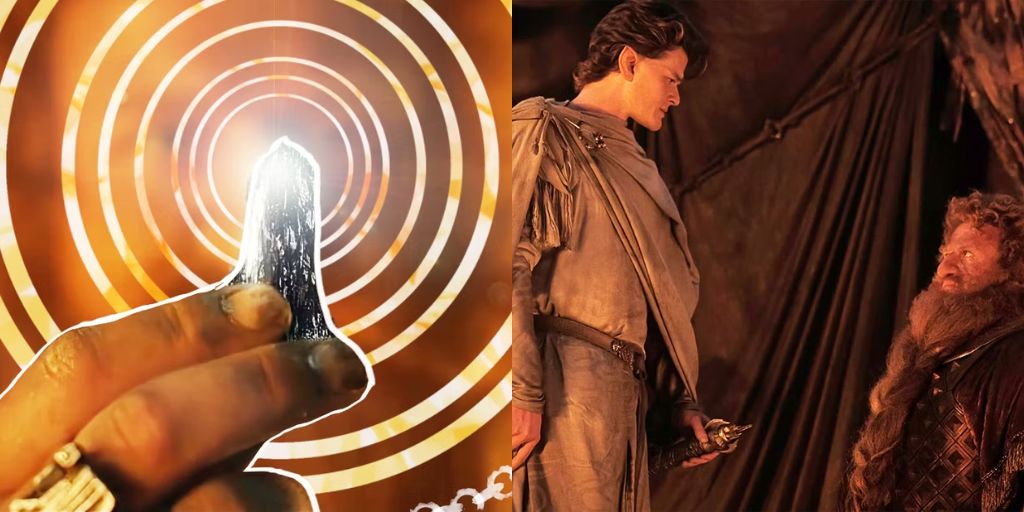
The Dwarves eventually attempt to reclaim Moria, but their efforts are in vain. Though they temporarily regain control of the upper levels, they are soon driven out again by the Balrog.
Mithril, once a symbol of Dwarven wealth and prosperity, becomes the cause of their downfall. The greed for more of the precious metal leads to the destruction of Khazad-dûm and the death of countless Dwarves.
Mithril’s dark legacy serves as a cautionary tale about the dangers of greed and the consequences of mining too deeply into the earth.
The Dwarves’ pursuit of mithril ultimately costs them their home, and Moria remains a place of darkness and danger for many centuries. Despite its value, mithril brings ruin to those who seek it without caution, a theme that resonates throughout Tolkien’s works.
Mithril’s Lasting Impact on Middle-earth
Mithril is more than just a rare metal in The Rings of Power. It holds deep significance for the Elves, Dwarves, and the future of Middle-earth. Its discovery sets in motion a chain of events that will shape the fate of entire races, and its magical properties give it a power beyond mere wealth.
As the series progresses, the true potential of mithril will likely be revealed, and its influence will spread across Middle-earth. However, as history has shown, mithril comes with great risk. Those who seek it must be careful, or they may suffer the same fate as the Dwarves of Moria.
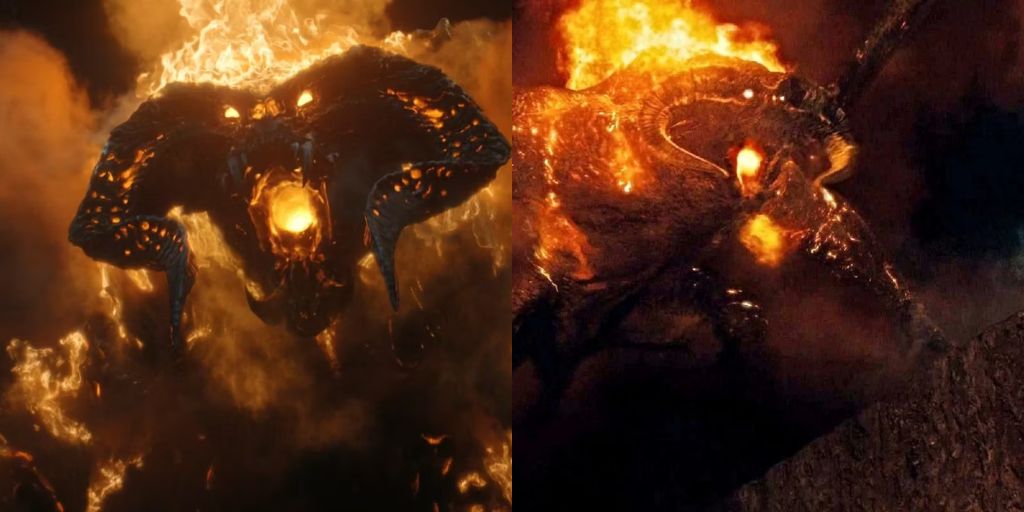
Mithril’s allure and its impact stretch far beyond its rarity and value, symbolizing both hope and destruction in Middle-earth. While it holds the potential to preserve the Elves’ immortality and protect against evil, it also serves as a reminder of the dangers of unchecked ambition.
As The Rings of Power continues, mithril will undoubtedly play a crucial role in shaping the destinies of the characters, offering both salvation and peril to those who seek its power.


